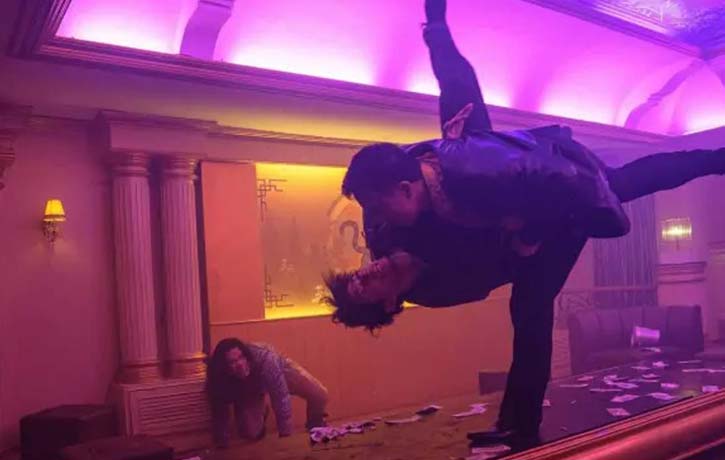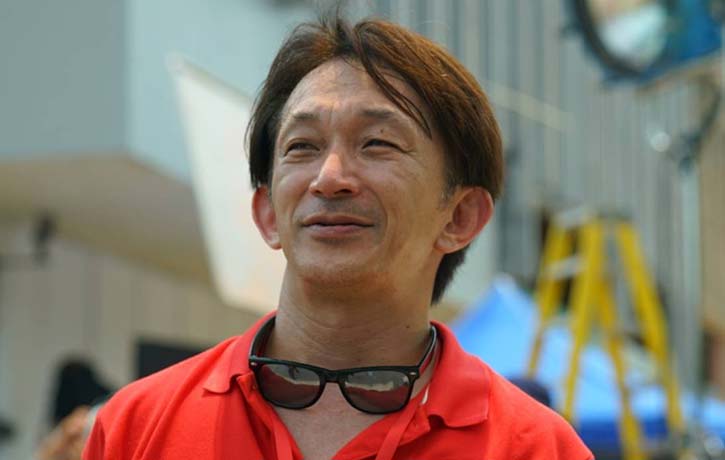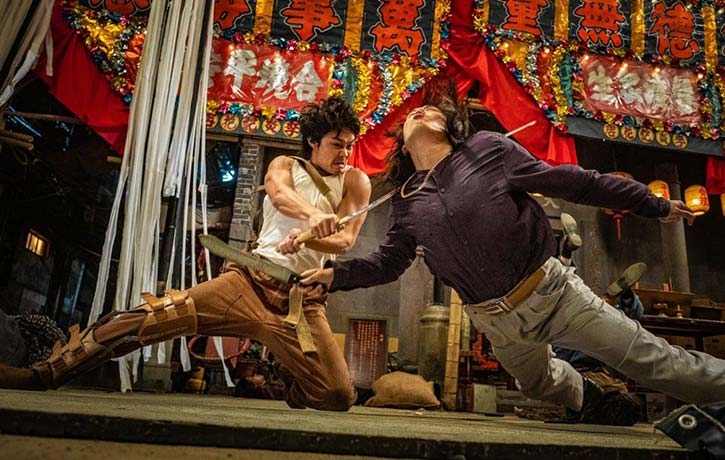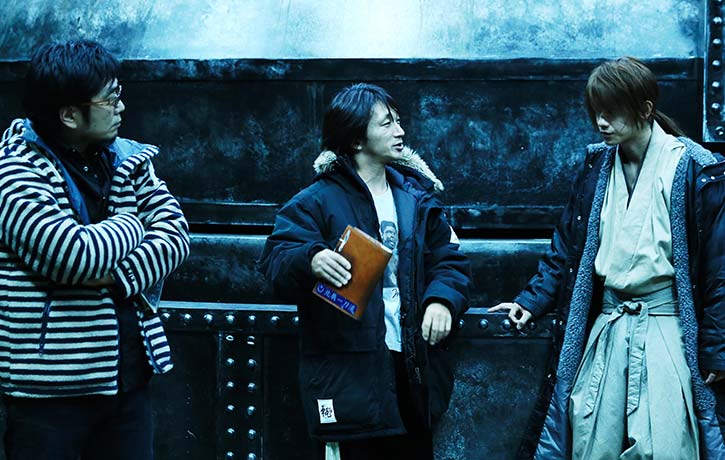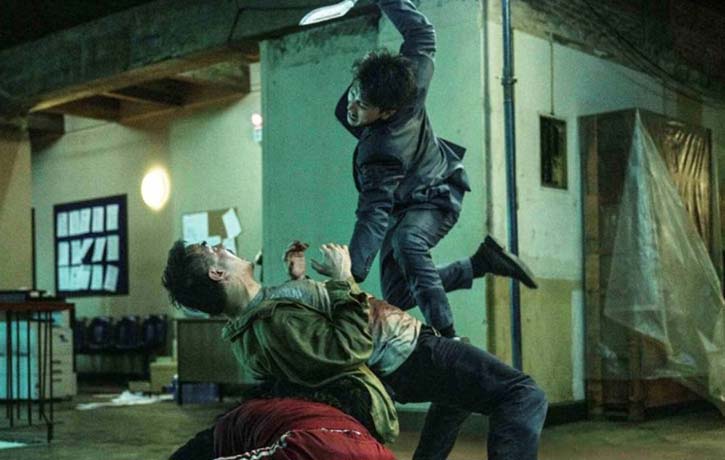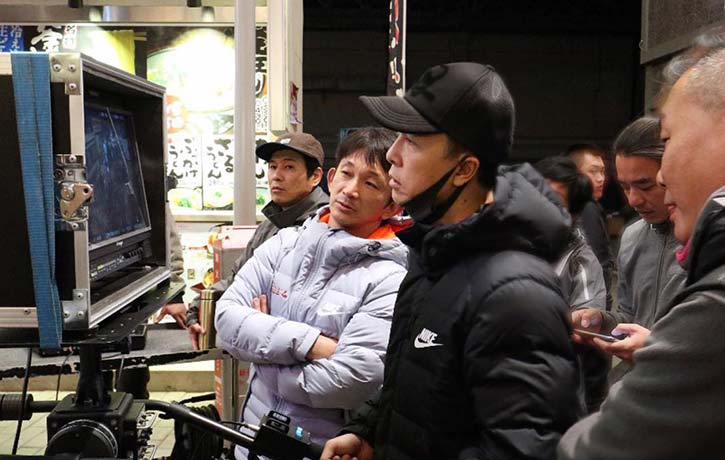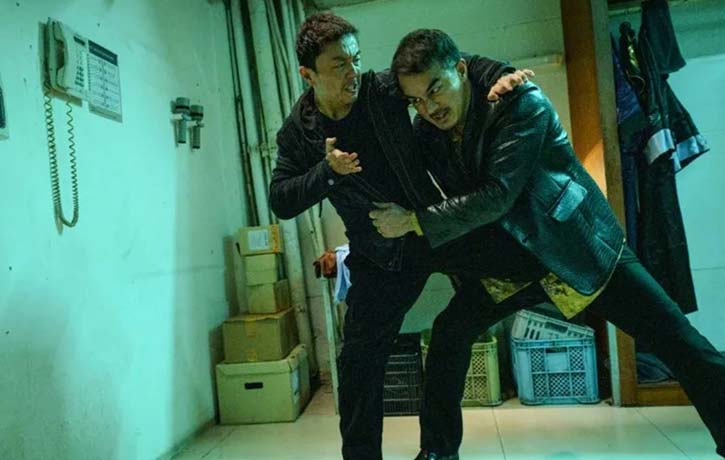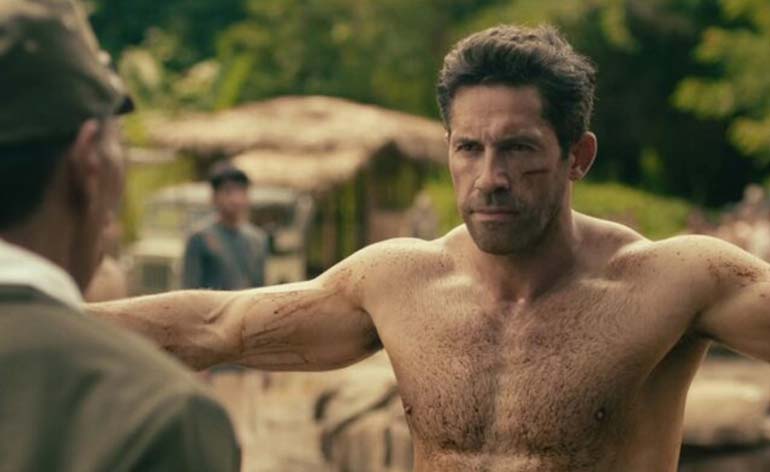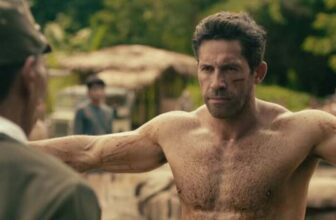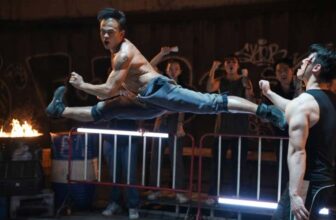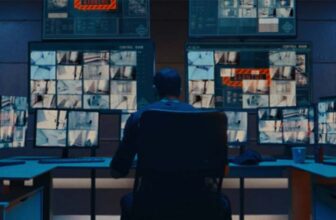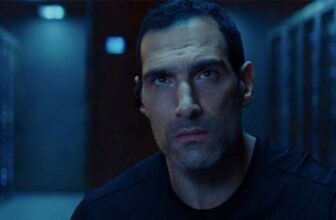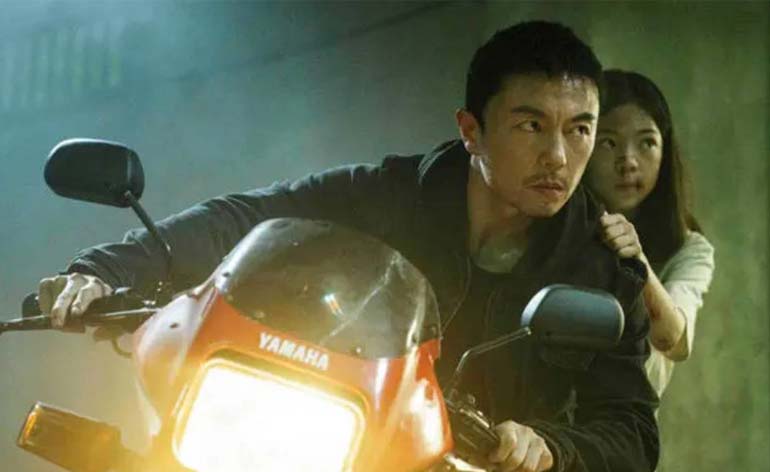
The legacy of Hong Kong action cinema is revered around the world by action fans, not just for the extraordinary standards of fight choreography it has set for decades, but of the respect accorded to the action directors behind the camera. Names like Corey Yuen, Sammo Hung, and Yuen Woo-ping are as heralded by martial arts movie lovers as those in front of the camera, and one who has come to build his own legendary status in the 21st century is Kenji Tanigaki. A long-time collaborator with Donnie Yen, Kenji has become one of the most definitively powerhouse action directors in the world today, many even describing him as the heir to Woo-ping’s throne. That legacy is likely to be set in stone with the upcoming release of the highly anticipated Hong Kong martial arts action ensemble “The Furious”, directed by Kenji.
In “The Furious”, a mute and deaf father named Wang Wei (Xie Miao) becomes a man on a mission to rescue his daughter after she is kidnapped by human traffickers. Wang Wei soon finds himself teaming up with journalist Navin (Joe Taslim), himself determined to rescue his wife (Jeeja Yanin) after her disappearance while investigating the same human trafficking ring, and needless to say, an action-packed ‘80s-style Hong Kong smackdown ensues. “The Furious” premiered at 2025’s Toronto International Film Festival, and with its showings at numerous festivals since, it has been heralded as an instant action classic and a new game-changer for Hong Kong action movies. With “The Furious” boasting a pan-Asian ensemble like Xie Miao, Joe Taslim, Jeeja Yanin, Yayan Ruhian, Joey Iwanaga, and Brian Le under the direction of Kenji Tanigaki and fight choreographer Kensuke Sonomura, action fans around the world continue to wait with fervent anticipation for “The Furious” to make its mainstream debut in the near future.
Today, KFK speaks to Kenji Tanigaki on the making of “The Furious”, the ins and outs of creating a martial arts action movie with such powerful impact, along with Kenji’s long career as a Hong Kong stunt performer, fight choreographer, and now rising director in his own right!
Hi Kenji, welcome to Kung Fu Kingdom. Hope you’re doing well today!
I’m doing very well, thank you Brad!
Fantastic Kenji! Well, before we get started, we were wondering your thoughts on our name Kung Fu Kingdom and our goal to inspire 100 million people around the world to study martial arts?
Yeah, I think it’s great. When I first saw Kung Fu Kingdom, I saw you have spoken with a lot of guys I know like Joe Taslim and Yayan Ruhian, and you’re really devoted to martial arts films, so I think it’s great!
Awesome, thanks Kenji! Well, let’s go ahead and start with your journey in martial arts. How did you first get started in martial arts? What different disciplines have you studied?
Well, I’m a professional filmmaker, but I wouldn’t say I’m a professional martial artist. My start was in the Jackie Chan era when I watched “Snake in the Eagle’s Shadow”, and I started imitating all of Jackie’s moves. Later on, I started to learn Shorinji Kempo, which is martial arts that come from China and mixed with karate and aikido. When I joined the Kurata Action School, I learned Shorin-ryu karate and some gymnastics, and of course reactions for movies. When I moved to Hong Kong, I also started to learn Choy Li Fut kung fu.
Joe Taslim executes a flawless hip throw in The Furious
Hong Kong action veteran Kenji Tanigaki directs the upcoming Hong Kong action opus The Furious!
So, how did you first get started in the Hong Kong film industry?
Well, after four years as a stuntman in Japan, I moved to Hong Kong when I was 22. I didn’t know anyone in the business then, but at that time, the Japanese film industry was almost dead, especially action movies. So, as a stuntman, I decided to move to Hong Kong, and I just opened up the yellow pages and called up the film production companies, and I visited and knocked on a lot of their doors. I started working as an extra, and I told a lot of the directors and stunt coordinator that I was a stuntman in Japan and I wanted to be a stuntman in Hong Kong. So, they started to know of me, and a year after I moved to Hong Kong, one stunt coordinator, Stephen Tung Wai, he asked me to join the Hong Kong Stuntman Association. That was how I started my career in Hong Kong as a stuntman, and other stunt coordinators and also Donnie Yen called me to work as a stuntman.
On that note, you’re well known for working with Donnie Yen frequently. How did your working relationship with Donnie Yen come about?
Well, when it started, I was just a stuntman, and Donnie was both a lead actor and action director, so I had the chance to learn from Donnie a lot. In 1995, when Donnie was shooting the “Fist of Fury” TV series, they needed a lot of stuntmen, and one of the assistants asked Donnie “Hey, there’s this Japanese guy just came to Hong Kong, do you want to use him?”, and Donnie said yes. So, they called me up and I was brought in for the dojo fight. It was suitable for me, because Chen Zhen, Donnie’s character, fights a lot of Japanese students, and many, many Hong Kong stuntmen were there pretending to be Japanese, and I was the only real Japanese guy there as one of the Japanese students!
Kenji designed the outstanding action sequences of Twilight of the Warriors
Kenji orchestrates the next big action scene on the set of Ruruoni Kenshin
The first day, I just did some reactions, and the second day, I did some stunts, and they were pretty easy. They used a lot of trampolines to fly into the wall, and then I would come back to do some reactions. But I really impressed Donnie and that was how he noticed “Oh, this Japanese boy, he’s not bad”, and after this, he called me every time. So, that’s how I started to work with Donnie. I also worked with Donnie on “Legend of the Wolf”, which was Donnie’ first movie as director, and I was the main stunt guy, and I was killed over 54 times in that movie! After that, I became the assistant stunt coordinator for Donnie, and we’ve been working together now for about 30 years, and I’ve learned a lot from him.
Many people think of me as “Oh, Kenji is the guy who does action Hong Kong style”, but what is the Hong Kong style? It’s very abstract, because as you know, Hong Kong has had Lau Kar-leung, Sammo Hung, Yuen Woo-ping, Jackie Chan, and they’re uniqueness and styles are very different from each other. So, when someone just say “Hong Kong style”, well, there are a lot of different styles, and my style is very much like Donnie’s style, so I really learned a lot from him.
Donnie is definitely a font of martial arts and moviemaking knowledge! So, what would you describe as some of your personal favorite projects or highlights of your work with Donnie Yen?
I think the first highlight is “Legend of the Wolf”, because at that time, I didn’t know anything about filmmaking, and of course, I was eager to learn, and when the movie came out, it blew me away. I think every movie is a highlight in its own way, but I think if you asked me to pick three movies I’ve made with Donnie as our biggest highlights, I’d pick “Legend of the Wolf”, “Flash Point”, and “Raging Fire”, but that’s what I’d pick today. If you asked me tomorrow, I might answer differently.
Especially with “Flash Point”, every day was an experiment, and the final fight took two months from the gun fight to the chase to the fight itself, it took two months. I think the maximum we got was four shots in a day, and then sometimes, we got zero shots in a day. Sometimes, some shots would look really good, but then the next day, Donnie would say “No, that’s no good, let’s re-shoot that.” We’d do that a lot where we’d shoot something, then re-shoot, so it was very experimental, and nowadays, nobody allows us to shoot like that. When we did “Flash Point”, that was really the last moment where Hong Kong movies allowed us to shoot that way.
In the ‘80s and ‘90s on Jackie Chan and Sammo Hung’s movies, they shoot and re-shoot like that. That was very normal in the ‘80s and ‘90s, but now, shooting days, especially on American movies, are getting less and less, while there are more and more post-production days. So, “Sha Po Lang” and “Flash Point” were part of the last generation of Hong Kong movies to be able to shoot that way, which is why I think they’re kind of a breakthrough in that way, especially with the MMA and ground work in them that’s influenced a lot of martial arts films since then.
Oh definitely. Looking at another acclaimed corner of your career now, you’re also well known for your role as action director on the “Ruruoni Kenshin” movies. How did you come aboard the “Rurouni Kenshin” franchise?
“Rurouni Kenshin” means a lot to me, because it’s a Japanese movie. At the time, I was a little bit disappointed with the Japanese film industry, especially in action movies, but our director, Keishi Otomo, allowed us to test many things and gave us a lot of support. In “Rurouni Kenshin”, it’s a lot of sword fighting, and we wanted to bring the kid of close-combat action from “Flash Point” into katana fights. Before in Japanese movies, the ways the katana was used, to me, seemed very fake, because it often looked to me like people were attacking the air. So, making the katana fights look real was the bottom line for the concept of “Ruruoni Kenshin” for me and making sure there was a consciousness to the target, that’s very important. But if you want to create that kind of feeling in the action, we need fake swords made of rubber. That made them “hittable”, and there was a bit of pain involved, but no one dies when they get hit.
Safety is always important. Looking at your career a little more recently now, you also served as action director on 2024’s massive Hong Kong hit “Twilight of the Warriors: Walled In”. How did you come aboard “Twilight of the Warriors” and what was the experience like of making the movie with such Hong Kong action legends as Louis Koo, Philip Ng, and Sammo Hung?
“Twilight of the Warriors” we made in 2021 or 2022 during the COVID era, so we had a lot more restrictions then. But one good thing about it was that everyone was able to really concentrate. Sometimes, the director Soi-cheang and I would be watching the monitor, and a lot of the cast and crew would bring a lot of ideas to us. So, it was a very good relationship with the cast and crew, and I think that made it a lot closer than other sets because of the COVID situation. Soi-cheang really allowed us to experiment, and he also accepted a lot of our opinions. I think the key to making good action scenes is having a good director.
And perfect segue into your latest project for which you stepped into the director’s chair, the highly anticipated martial arts action ensemble that is “The Furious”! How did you come aboard “The Furious” as the movie’s director?
It was about two years ago. The producer, Bill Kong, he was also the producer for “Crouching Tiger Hidden Dragon”, “Hero”, and “Fearless”, so he made a lot of action movies before, but hadn’t done as many since. One day, he called me up and said “Hey, I want to make the ultimate Pan-Asian action movie”, and we started to make the story and put together the cast. For “The Furious”, they were all real action actors, because sometimes on other movies like “Ruruoni Kenshin”, a lot of the actors had no experience before with action movies. To me, that’s okay, because good actors can learn how to do good action scenes. But this time for “The Furious”, I needed actors who all had good experience in shooting action movies for many years. So, Xie Miao from China, Yayan Ruhian and Joe Taslim from Indonesia, Jeeja Yanin from Thailand, Joey Iwanaga from Japan, and Brian Le from the U.S.A. The most important thing was they were good martial artists and good actors, too.
Kenji Tanigaki’s The Furious is ready to electrify Hong Kong action movies! (1)
Kenji with Donnie Yen on the set of Enter the Fat Dragon.
“The Furious” I would say is more a martial arts movie than an action movie, and when you watch the movie, I think you can feel that. “Twilight of the Warriors” is little like an orchestra, while “The Furious” is more like unplugged music, like an acoustic guitar. It’s very hard to describe, but it’s more realistic, less wires, more down to Earth and more raw. That was one of the challenging things about shooting “The Furious”, because every shot was a longer take, so all the actors would be very tired by the end, but I feel like audiences nowadays, they want to see actors struggling, so I was very lucky to have these very talented and dedicated actors. You can see they gave their 200 percent best, and it’s very beautiful. I think we were very successful, and so “The Furious” is very special to me.
Was the mandate with “The Furious” to make the movie as a big throwback to classic ‘80s and ‘90s Hong Kong action and martial arts movies?
Yes, yes, because that kind of classic from that era still blows me away. It’s like watching Buster Keaton or Gene Kelly, so I hope “The Furious” has a very long life. That’s the target for me, Bill, and everyone.
And speaking of that, the final five-way showdown of “The Furious” has been very highly praised, with some, like one of TIFF’s organizers Peter Kuplowsky, even likening it to the finale of “Dragons Forever”? What can you share about the process of creating the finale of “The Furious”? Was “Dragons Forever” a template in designing the final fight of “The Furious”?
Yeah, I’ve seen it compared to “Dragons Forever”, but the most important thing was, situation-wise, the basic story is like “Taken”, with a father trying to rescue his daughter, but the finale is five guys from three different parties, and everybody has a background and a reason to come here and fight each other in a battle royale. On other movies, they’ll use stunt doubles for the real actor on big action scenes, and they’ll cut back and forth between the stunt guy and the real actor, and it’s very common. But for this movie, we have five people fighting, and the camera is going around all of the action and with longer takes, so we cannot cheat.
I really wanted that audience to go “Wow, that’s real!”, and that makes this movie really special. Choppy cutting is good for actors who can’t move the same way, but because we were so lucky to have these kinds of actors who can really move, we needed the set pieces to look really good, and most people who have seen “The Furious” love that fight scene.
Were there any injuries or mishaps during the making of “The Furious”?
Well, “The Furious” is a crazy movie, but we aren’t crazy! We made the set as safe as possible, but screen-wise, our target is to make everything look really dangerous. Of course, there’s some muscle pain or twisted ankles, but no big injuries happened. Part of the reason is the cast is just very used to shooting action scenes.
And with such a capable cast on “The Furious”, there has already been some talk about the franchise continuing after the movie’s release. Is there a possibility for “The Furious 2” or further possibilities in “The Furious” franchise?
Kenji with his mentor and fellow Hong Kong action veteran Yasuaki Kurata
Xie Miao and Joe Taslim go head to head in a big fight scene in The Furious.
Yeah, if people love it, why not? After “The Furious” is release, I hope many people love it and want to see the second one or a spin-off.
That definitely sounds awesome! So, what other projects do you have coming up after the release of “The Furious”?
I have a lot. Of course, “Twilight of the Warriors 2”, and I just recently had a meeting for the Caine spin-off from the “John Wick” franchise with Donnie, which should hopefully start next year.
Yes, the Caine spin-off from “John Wick: Chapter 4” sounds great! Well, as we prepare to sign off Kenji, what message would you want to share with Kung Fu Kingdom readers and your fans around the world?
Well, I’m a fanboy like all of you Kung Fu Kingdom, too, so I hope I can make the kind of movies that you guys love.
That sounds awesome, we definitely look forward to seeing that happen! Thank you so much for the pleasure of our interview today, Kenji. Congratulations on the phenomenal reception of “The Furious” in the movie’s premiere on the festival circuit. Good luck on the mainstream release of “The Furious” in the near future, and we look forward to seeing all of your action-packed projects in the future!
Thank you, and thanks for having me today on Kung Fu Kingdom, Brad!
Stay tuned for more info on “The Furious” as it arrives! Are you excited for the electrifying martial arts ensemble of “The Furious”? What are some of your favourite martial arts flicks with the core cast of “The Furious”? What are some of your favourite Hong Kong martial arts action movies? Let us know in the comments below; Like, share and join in the conversation on Facebook and follow us on Twitter & Instagram. (Don’t forget to check out KFK’s FURIOUS FU-niverse of movie reviews and exclusive interviews, including our interviews with Joe Taslim, Jeeja Yanin, and Yayan Ruhian, grab your exclusive KFK gear and subscribe for more amazing action on YouTube, as well!)

